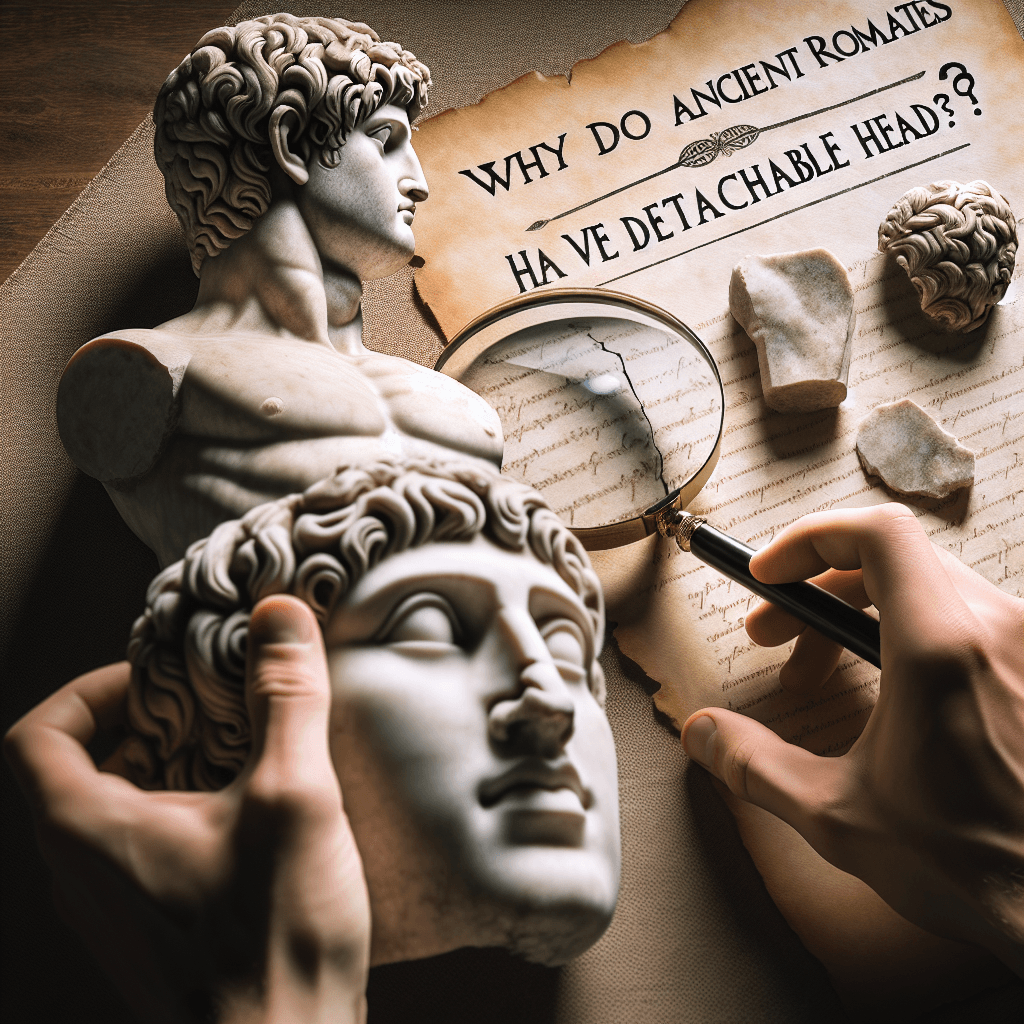Why do some ancient Roman statues have detachable heads
It wasn't vandalism or a mistake; these ancient statues were cleverly designed with interchangeable heads for a purpose that was both brutally practical and deeply political.


Too Long; Didn't Read
TLDR: Romans used detachable heads on statues to save money and time. It let them mass-produce generic bodies and add custom heads later, or easily replace the head of a disgraced emperor with a new one without making an entirely new statue.
Solving the Marble Mystery: Why Do Some Ancient Roman Statues Have Detachable Heads?
Walk through the classical wing of any major museum, and you’ll inevitably encounter them: rows of ancient Roman statues, many of which are missing their heads. The common assumption is that these are simply the unfortunate victims of time, conquest, or iconoclasm. While that is often true, a closer look reveals a more fascinating story. Some of these ancient figures were intentionally designed with detachable heads. This wasn't a flaw, but a clever and surprisingly practical feature. This post will explore the economic, political, and practical reasons why Roman sculptors created statues with interchangeable parts, revealing a unique insight into the Roman world.
The Practicality of Production: Efficiency and Cost-Saving
One of the primary reasons for creating statues with separate heads was workshop efficiency. The Roman Empire had an enormous demand for statues, from honoring emperors and generals to commemorating wealthy private citizens. To meet this demand, workshops developed a system that resembled a modern assembly line.
Sculptors would mass-produce generic bodies in standard poses—a figure wearing a toga (a togatus), a general in a cuirass, or a goddess in flowing robes. These bodies were often carved from less expensive, local marble by skilled but not necessarily master-level artisans.
Meanwhile, the most crucial part of the statue, the portrait head, would be commissioned separately. This allowed for:
- Specialization: Master sculptors, often highly-prized Greek artists, could focus their talent on capturing a realistic and detailed likeness, which was the most important element of Roman portraiture.
- Cost-Effectiveness: The finest and most expensive marble, like brilliant white Carrara or Parian marble, could be reserved for the head, while the larger body was made from more affordable stone.
- Speed: A client could select a pre-carved body from the workshop's "stock," and only have to wait for the custom portrait head to be completed, dramatically reducing production time.
The head was typically carved with a tenon—a peg-like extension at the base of the neck—that fit neatly into a mortise, or socket, carved into the top of the torso.
Political Expediency: Recycling Statues in a Turbulent World
Beyond the workshop, the most compelling reason for detachable heads was political. Roman politics were notoriously volatile. An emperor hailed as a god one year could be declared an enemy of the state the next. This official condemnation was known as damnatio memoriae, or the "damnation of memory."
When a ruler or prominent figure suffered damnatio memoriae, their name would be chiseled from inscriptions and their images destroyed. This is where detachable heads proved incredibly useful. Instead of toppling and destroying an entire multi-ton marble statue, authorities could perform a much simpler act of political recycling:
- The disgraced individual's head was removed.
- A new portrait head of the current emperor or a rehabilitated figure was carved.
- The new head was attached to the existing body.
This practice saved immense time, effort, and expense. A statue of the reviled Emperor Caligula could, overnight, become a statue of his successor, Claudius. This efficient method allowed the visual landscape of a Roman city to keep pace with its rapid political changes, ensuring that only the currently favored figures remained on public display.
More Than Just Emperors
This practice wasn't limited to the imperial family. Wealthy patrons, governors, and local magistrates also commissioned these types of statues. A family might honor its patriarch with a fine statue and, upon his death, replace the head with that of his heir to maintain the family’s public prestige without the cost of a brand-new monument.
Next time you are in a museum, look closely at the neckline of a Roman statue. If you see a clean, straight seam, a slight difference in the marble's color or quality between the head and body, or a recessed socket in a headless torso, you may not be looking at damage. Instead, you could be witnessing a clever piece of ancient Roman engineering designed for a world of practicality, efficiency, and ever-shifting political fortunes.
Conclusion
The detachable heads of Roman statues are far more than just signs of historical wear and tear. They are a testament to Roman ingenuity and pragmatism. This practice streamlined artistic production, saved valuable resources, and provided a flexible solution for navigating the treacherous currents of Roman politics. What might first appear as a broken artifact is, in fact, a complete story of art, economics, and power. These statues remind us that ancient artisans were not just artists, but also savvy innovators who created works designed to endure—both in stone and in their ability to adapt to a changing world.


